High Times
High Times
High Times
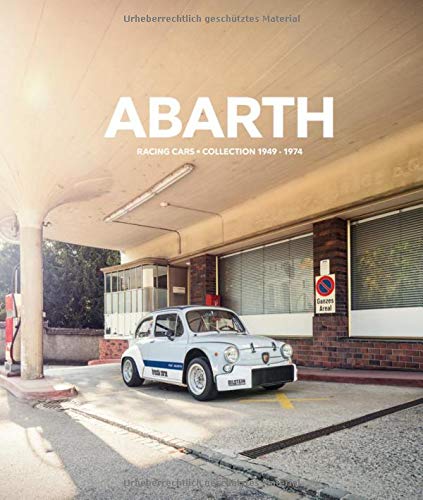
A spectacular collection of 48 Abarth race cars, covering the whole production period, with lavish pictures by top photographers, makes for a very exciting book. The author has access to huge archives, one from a former race mechanic, with lots of letters, documents and historic photos.
The pictures are the main focus here, interspersed by anecdotes from the golden times of motor racing.
Text in English and German.
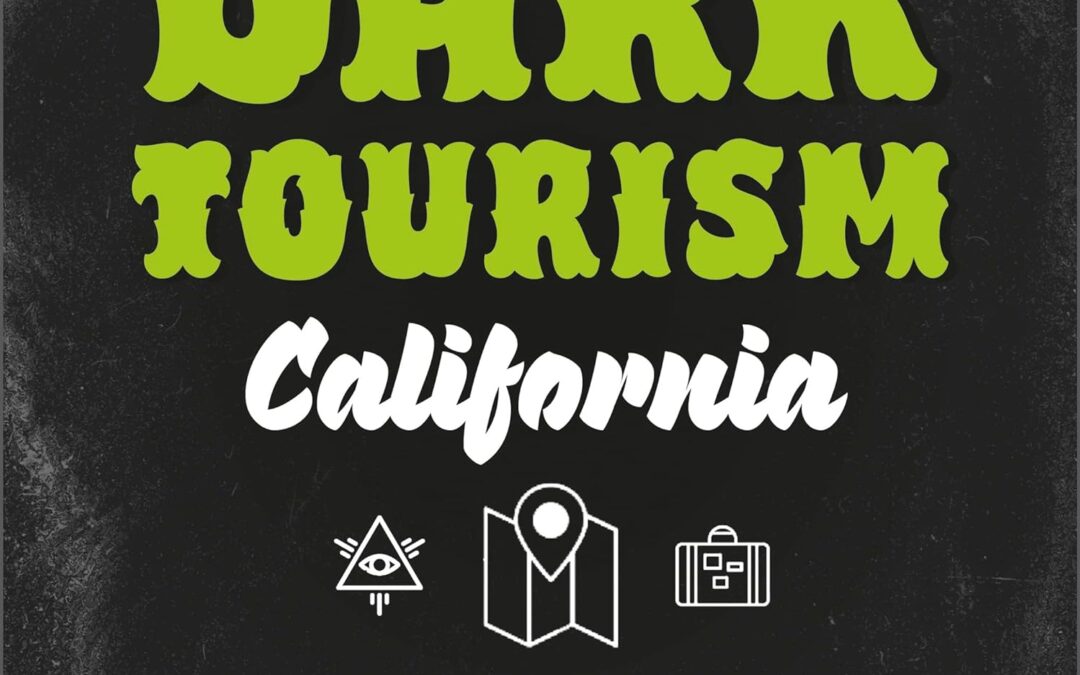
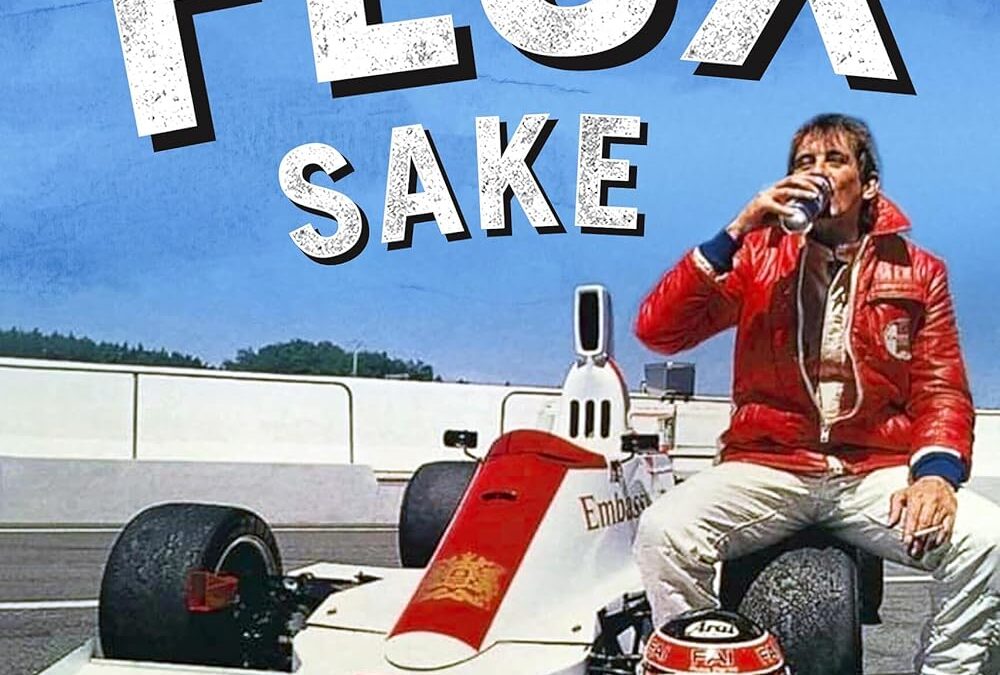
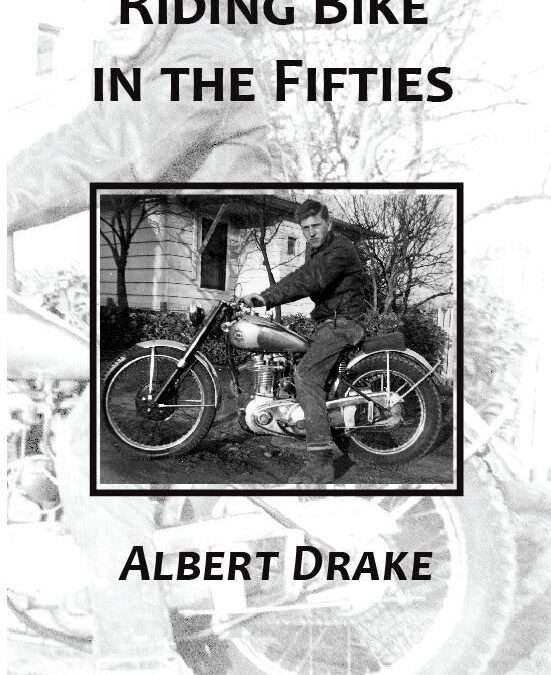
“Sometimes, on certain mornings in early fall, when there is a light fog and the air holds a hint of moisture, I can recall so clearly the sound of a single’s exhaust. The mist put a layer of moisture on the chrome, and I’d wipe dew off the seat with a rag, tickle the carb and mount the bike. Using the compression release, I’d kick the piston through until it was on compression stroke and kick it without the compression release, maybe once, maybe more, until it fired. The exhaust was crisp, sharp, with a bark as I cracked the throttle.”
This book contains oral histories, essays, a long poem about riding motorcycles in the 1950s. First-hand accounts by guys who had the experiences. A journey into memory, back to a time that has to be called the Golden Age of Motorcycles, British bikes– BSA, Triumph, AJS, Matchless, Norton, Velocette –had invaded roads and race tracks previously dominated by Harley-Davidson and Indians. If there was a rule it was “run what ya brung,” never mind about insurance, licenses, headlights, mufflers, crash helmets. There was never a time when so many were so free on two wheels.
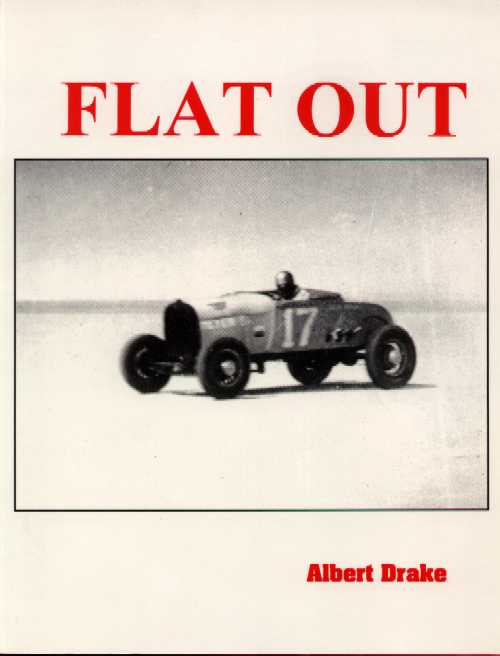
In the late 1920s hot rodders began to gravitate to the various dry lake beds near Los Angeles to engage in straightaway time trials. By the late 1930s the sport had become formalized and was booming. It’s a purely American activity, and one that continues to this day.
Flat Out: California Dry Lake Trials 1930-1950 is the definitive history of the sport during the Golden Age of dry lake competition. It covers the beginnings, Muroc Racing Association, SCTA, the “bootleg races” during WWII and the postwar period. 300 photos of almost every notable dry lake car.
When Drake started this book, almost nothing was written about dry lake competition during the years 1930-1948 (when Hot Rod Magazine began). This book contains information that would otherwise be lost.
The book has 300 photographs, showing almost every notable dry lakes car, and many “typical” cars. It captures the spirit of the times–what it must’ve been like to have been a rodder during those two decades.
Chapters on: Hollywood Folks, Wrecks, Behemoths, Streamlining, Timing, Organizational Activities, Souping the Four Barrel, the V-8 and more.
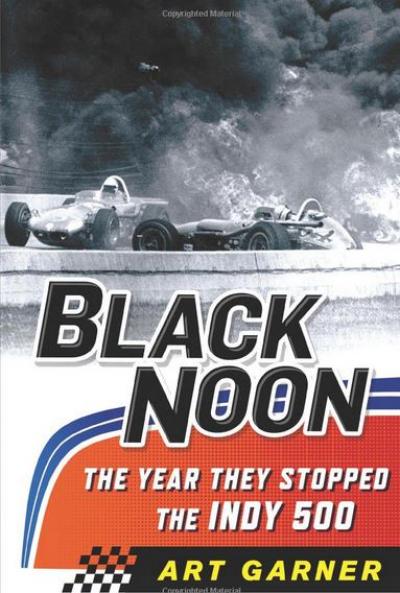
Winner of the 2014 Dean Batchelor Award, Motor Press Guild “Book of the Year”
Short-listed for 2015 PEN / ESPN Literary Award for Sports Writing
Before noon on May 30th, 1964, the Indy 500 was stopped for the first time in history by an accident. Seven cars had crashed in a fiery wreck, killing two drivers, and threatening the very future of the 500.
Black Noon chronicles one of the darkest and most important days in auto-racing history. As rookie Dave MacDonald came out of the fourth turn and onto the front stretch at the end of the second lap, he found his rear-engine car lifted by the turbulence kicked up from two cars he was attempting to pass. With limited steering input, MacDonald lost control of his car and careened off the inside wall of the track, exploding into a huge fireball and sliding back into oncoming traffic.
Closing fast was affable fan favorite Eddie Sachs. “The Clown Prince of Racing” hit MacDonald’s sliding car broadside, setting off a second explosion that killed Sachs instantly. MacDonald, pulled from the wreckage, died two hours later.
After the track was cleared and the race restarted, it was legend A. J. Foyt who raced to a decisive, if hollow, victory. Torn between elation and horror, Foyt, along with others, championed stricter safety regulations, including mandatory pit stops, limiting the amount a fuel a car could carry, and minimum-weight standards.
In this tight, fast-paced narrative, Art Garner brings to life the bygone era when drivers lived hard, raced hard, and at times died hard. Drawing from interviews, Garner expertly reconstructs the fateful events and decisions leading up to the sport’s blackest day, and the incriminating aftermath that forever altered the sport.
Black Noon remembers the race that changed everything and the men that paved the way for the Golden Age of Indy car racing.
Soft Cover
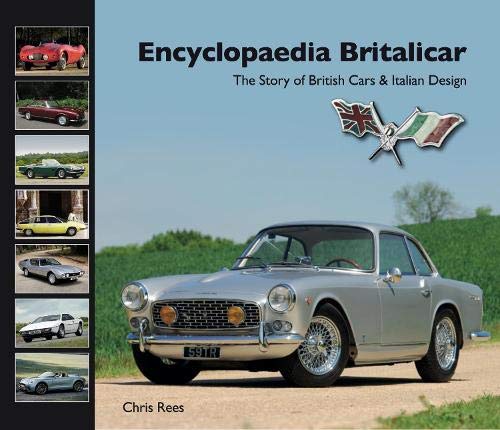
Celebrating the rich, deep partnership between the British car industry and Italian design, this book is packed with coachbuilt cars, design classics and concept cars from the 1920s to the current day. The story starts with the early days of coachbuilt cars on separate chassis from illustrious marques like Bentley, Frazer Nash and Rolls-Royce, which were bodied by such Italian coachbuilders as Pinin Farina, Viotti and Zagato. After World War Two came the golden era of coachbuilt cars, with Italian companies creating some of the world’s most beautiful shapes of all time on chassis from the likes of Aston Martin, Austin-Healey, Bristol, Jaguar, Jowett, MG, Riley and Rover.
Then came the era when Italian carrozzerie morphed into design houses, penning shapes for mass-produced cars like the BMC 1100/1300 and Triumph Herald, and crafting what are widely recognised to be some of the world’s most beautiful cars, such as the Aston Martin DB4, AC 428 and Lotus Esprit.
Finally came the era of the ‘concept car’, with incredible show designs based on British marques such as Jaguars by Bertone, the BMC 1800 Berlina Aerodinamica by Pininfarina and Lotus by Italdesign.
This book reveals the full stories behind the intense, diverse, sometimes surprising and always fascinating links between British cars and Italian design: the characters, the deals, the designs and above all the cars themselves.
Over 40 British marques are included, from AC to Wolseley, and from major names like Jaguar down to smaller operations such as Jensen, TVR, Elva and Gordon-Keeble. These are matched by more than 40 Italian carrozzerie, from Allemano to Zagato. As well as major collaborations – such as Pininfarina and BMC, Michelotti and Triumph, Touring and Aston Martin – myriad never-before-told stories of small operators really make this book special: the likes of Frua, Boano, Fissore, Monviso, Sibona-Basano and Schiaretti.
Richly illustrated with hundreds of period images, high-quality modern photography and dozens of sketches by the designers themselves – many never seen in print before – this is a book to relish for both lovers of design and enthusiasts of British and Italian cars.
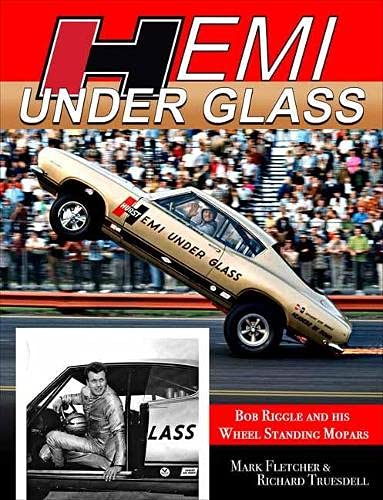
Look up to the skies through Bob Riggle’s eyes in this wheelstanding, must-have Mopar history book on Hemi Under Glass!
While the established stock and modified brackets are long-recognized as the heart and soul of drag racing, it was the wheelstanders that more often than not put butts in the bleachers. In that category, some of the most well-known names included Bill “Maverick” Golden’s Little Red Wagon, Bill Shewsberry’s L.A. Dart and Chuck Poole’s Chuck Wagon. Although, most memorable of all was the Hurst Hemi Under Glass Plymouth Barracuda campaigned by Bob Riggle.
Riggle started his career in the early 1960s as a car builder and mechanic for Hurst-Campbell and eventually ascended to pilot the Hemi Under Glass. When he left Hurst in 1969, the Hemi Under Glass franchise transferred with Riggle. He continued for six more years as the owner/driver of a succession of Hemi Under Glass renditions. In the 1990s he resurrected the concept of the original car—making four different versions (1966, 1967, 1968, and 1969)—and continued to thrill drag racing fans with his wheelstanding antics.
At the time of this writing, Bob’s last run with the Hemi Under Glass was in the summer of 2019. He claims to have retired (he was 83 years old at the time), but he’s claimed that before!
For all the success he enjoyed over his long and distinguished career, which is believed to be one of the longest in all of motorsports, he’s best remembered for a run at Irwindale Raceway in early 2016 with comedian and car buff Jay Leno in the passenger seat in a video that has been viewed more than 10 million times.
This is Bob’s story, one that Mark Fletcher and Richard Truesdell, co-authors of the 2012 book Hurst Equipped, are honored to share. They say the story was easy to tell—given their unprecedented access not only to Bob but also to his vast archive of photos that reflect his ongoing popularity. Many of the photos in this book are seen in print for the very first time.
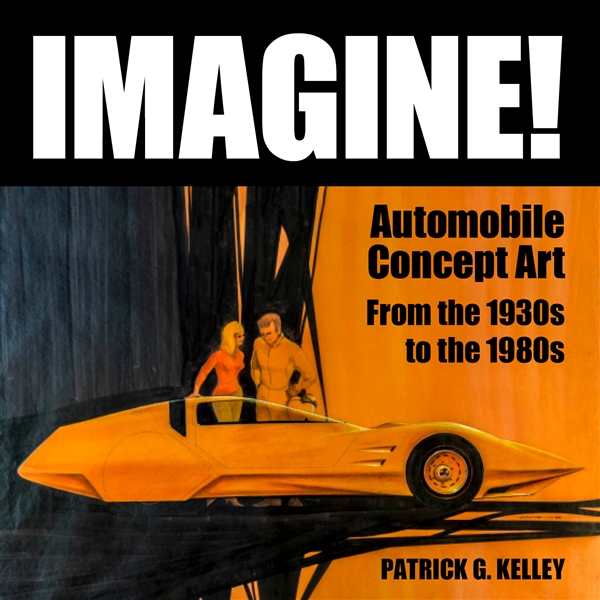
The golden age of American automobile design is universally considered to be from the 1940s to the early 1970s, an innovative period for the country’s automobile manufacturers and for the artists who designed and styled the cars of the future. The goal was to sell more cars primarily by employing artists to create vehicles with ‘eye appeal’ for the buying public. There were many thousands of drawings of these futuristic models, but almost all have been lost or purposely destroyed by the manufacturers to minimize copying. The eye-catching images shown in this book have been gathered together over the last 15 years and now form part of The Kelley Collection. They are rare survivors and illustrate the work of the men and woman who drew and designed the cars from their early days at art school and during their employment with the ‘Big Three’ automobile manufacturers. These artists have been almost forgotten and this book honors them for their contributions and imagination. The reader is taken back to earlier times when the sky was the limit, dreams and vision were encouraged and restrictions were few. 87 individual artists are represented here with 235 wonderfully unique images.
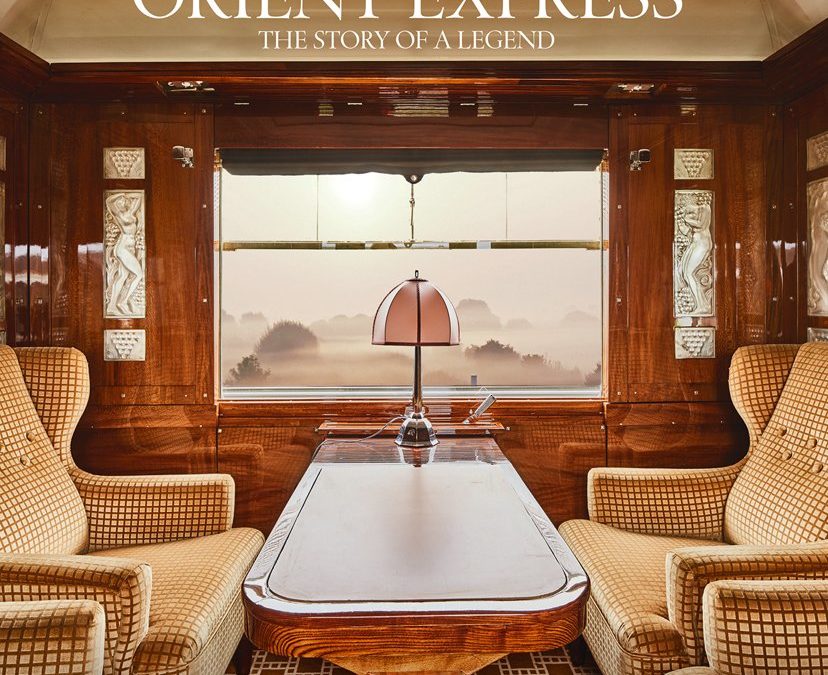
This beautifully illustrated book captures the history, the legends and the unique style of the most famous train on earth: The Orient Express
• With never-before-seen archival material
• With a preface by Sir Kenneth Branagh
“The Orient Express, in the collective imagination, embodies the golden age of travel. The fabrics, the silverware, the woodwork; their evocative fragrance… all contribute to this particular atmosphere, created by the best craftsmen of the time. The experience on board is absolutely unique…” – Sir Kenneth Branagh, from the foreword
The first train to connect Paris to Constantinople – the gateway to the Orient and epitome of all its associated desires and fantasies – the Orient Express was an immediate success. Quickly nicknamed ‘the king of trains, the train of kings’, it had already become a legend in its own time. This unique train and its celebrated passengers (both real and fictional) have become one of the great cultural icons of our times and have helped to create a limitless source of stories and fantasies to feed our imaginations. It’s a story told here through fabulous new photographs of the restoration workshops where the historic train carriages are being brought back to life, through archive photos of famous and exotic destinations, and portraits of the most famous passengers who were lucky enough to climb aboard.
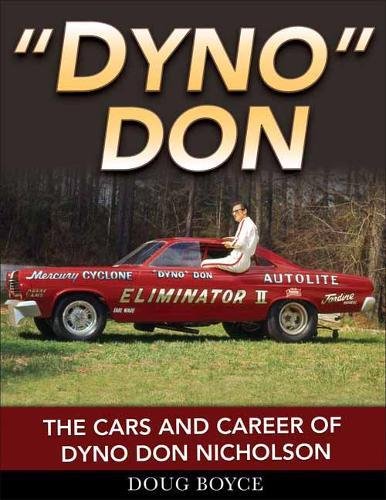
Many fans of drag racing consider the most interesting era to be from the 1950s through the 1970s, the years when the sport really took off. During that period, so much changed from a speed and technology standpoint that people often refer to this time as the golden age of drag racing.
Drivers often became associated with a particular manufacturer, such as Chevy, Ford, or Chrysler through sponsorship, factory team rides, or sometimes simply their own preference. The more successful drivers became household names in the drag racing community. Chevy had Grumpy Jenkins, Pontiac had Arnie “the Farmer” Beswick, Mopar had Sox & Martin and Dandy Dick Landy, and Ford’s most successful driver of the era was the legendary “Dyno Don” Nicholson.
Nicholson’s first wins on a national level were actually in the early 1960s in Chevrolet products. He became extremely successful on the match-race circuit. Then, in 1964, he switched over to Mercury with the new Comet after General Motors enacted a factory ban on racing activities. He won 90 percent of his match races that year. He stuck with Ford and Mercury products and won throughout the 1960s and 1970s, even after Ford also pulled the plug on factory team sponsorship. He made it to the final rounds in nearly 50 national events during that period, in addition to winning championships, awards, and match races along the way. If you are a fan of a certain era of racing, a Ford fan, or certainly a “Dyno Don” fan, this book will be a welcome addition to your library.

Road racing has long-storied roots in North America that reach from coast to coast and to Canada. Some of the greatest drivers to ever compete raced wickedly fast machines, staged epic duels on winding strips of asphalt, and created history. This history left an enduring legacy that is revealed and celebrated in Lost Road Courses. Road racer and road racing expert Martin Rudow retraces road racing’s glorious past and visits the defunct classic road courses across the United States and Canada.
Many road courses were built in the 1950s and 1960s, the golden age of American road racing. These classic road courses built and hosted famous races for Trans-Am, Can-Am, IndyCar, Formula 1, and sports car racing, but did not survive the times. They fell victim to changing times, poor business decisions, urban sprawl, safety standards, and increasing real estate prices. Rudow recounts the breathtaking races and fascinating history of more than 16 tracks from around North America. Riverside International Raceway, Bridgehampton Race Circuit, Ontario Motor Speedway, Continental Divide Raceway, and many others were once major race venues that have since closed. The great race teams, legendary drivers, classic race series that visited the tracks, and cars that turned laps are brought into full focus. The exploits of Chaparral, McLaren, Bud Moore, Lotus, Penske, and other race teams as well as racing greats Mario Andretti, Parnelli Jones, Jim Hall, A. J. Foyt, Al Unser, Jim Clark, and Dan Gurney are covered. Rudow also digs beneath the surface to reveal the story behind the story. The visionaries and businessmen who saw potential and risked capital to build these palaces of speed come back to life. He also recognizes the unsung heroes and regional racers who competed, staffed, and took on various roles at these tracks.
In the pages of this book, a nostalgic tour of these famous races at these vintage road circuits unfolds. Many period photos illustrate the racing action and the tracks themselves in their former glory, and modern color shows the tracks as they currently stand. If you’re a fan of classic sports car, Can-Am, Trans-Am, IndyCar, Formula 1, as well as classic and unique tracks of yesteryear, this book is a must-have.

“””I am no helmeted, begoggled hero of the skies; picture me bookish, bespectacled, unable to hold even a teacup without rattling it. As a pilot, I am merely an amateur, and I know it. . . . I shouldn’t be talking. But I can’t help talking. For you take the air: the thin, substanceless air that can be made to bear a man; you take America; and you take an airplane, which of all the works of man is the nearest to a living being—you take those things and mix them up, and they will act as a drug which will knock all proper reticence right out of you. And so, here I go talking . . .””—from America from the Air In 1927, Charles Lindbergh made his historic solo flight across the Atlantic; Amelia Earhart became the first woman to do so in 1932. And so was born the golden age of flying. Aviators became the era’s new heroes and the airplane its icon. In early 1930s Chicago, a German-born graduate student became fascinated by the airplane and its usefulness as a great geographic and sociological tool. Wolfgang Langewiesche sold his car and used his meager salary to pay for flying lessons at 25 cents a minute. With the same passion America had taken to the road a decade earlier, Langewiesche took to the air. He eagerly inhaled the landscape and breathed observations about the country, writing a series of books that describe the heady excitement and freedom of flight and the stunning views of his adopted country from an entirely new vantage point—the sky. This new edited volume revives the writings from two of his now out-of-print books. America from the Air draws from Langewiesche’s classic account of his early experiences as a pilot, I’ll Take the High Road (first published in 1939 and praised by the New York Times as “”a stirring and revealing story, told with sensitiveness and lucidity and with the warmth of a modest personal charm””), and selections from his 1951 memoir, A Flier’s World, to create a distinctive book that provides a pioneering look at the American landscape as seen from the cockpit of a light plane. Langewiesche’s photographs from his cross-country flights circa 1939 evoke the era. Wolfgang Langewiesche is revered among pilots for his 1944 flying primer, Stick and Rudder, currently in its seventieth printing. Considered the bible of aviation, it tells us the “”how”” of flying; America from the Air tells us the “”why.”” Here his descriptions of the country offer unique perspectives on New England, the Midwest, and the Atlantic Coast from Virginia to Key West, at a time before the country was paved over by multilane expressways, suburban tract housing, and strip malls. His bird’s-eye view of America takes in small farms, deserted seashores, busy railway lines, and cities in which skyscrapers were still engineering marvels. With the keen eye of a surveyor and an uncommon talent for conveying the physical sensation of flying, he describes landscape in all its beauty and detail as it rolls out beneath him, unveiling its mysteries. Langewiesche is revealed here as an infectiously enthusiastic aviator and an unrivaled observer of the American landscape. In a new foreword, Langewiesche’s son, writer William Langewiesche, describes his father’s love of the view from above. Hokanson and Kratz’s introduction and biography update the reader, incorporating stories gleaned from recent interviews with the author.
”
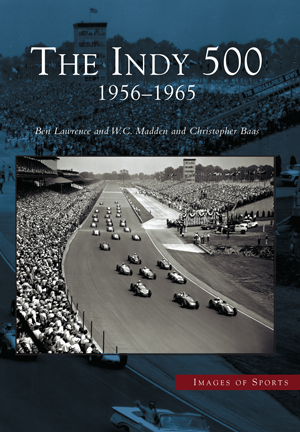
The 1950s and early 1960s are considered by many to be the Golden Era of Racing at the Indianapolis 500, and photographer Ben Lawrence was on hand taking photos of the Greatest Spectacle for the Indianapolis Times. During that era, Ben captured many images of the race and race events that surrounded the Indy 500. He was there when Bill Vukovich met his fate in 1955. He photographed the first Indianapolis 500 Parade, which has become an annual event. He captured A.J. Foyt winning his first race at the Brickyard. He was on hand to photograph the breaking of the 150-mph barrier. Then he saw the transition from the front-engined Offenhauser to the rear-engined Lotus-Fords, which ended the Golden Era.

Whether it’s a new Formula One V10 wailing at almost 20,000rpm or the metallic howl of a classic V12, there is nothing on earth like the sound of a racing car at full speed – and if it’s a bright red Ferrari screaming by flat-out, then so much the better.
“Red Noise” has been produced by broadcast audio specialists to bring those sounds right into your living room, your car or your stereo headphones. It utilises incredible recordings made in areas that the general public can never hope to reach….with microphones mounted on the trackside guard rails, and even from right inside the famous Monaco tunnel!
Listen to the sounds of Ferraris, Maseratis and Alfa Romeos spanning more than 75 years of motor racing history and featuring the world’s most famous Grand Prix cars.
This is a genuinely unique aural experience, so push the ‘play’ button, close your eyes and let your imagination and “Red Noise” take you right to the trackside.
Ferraris – Old and New1. See Red, Hear Red! The Vintage Sports Car Club stages an annual meeting at Donington Park that is themed around Italian racing cars. ‘See Red’ is the name of the VSCC meeting and we went there to give you the chance to ‘Hear Red’ ! First there’s the harsh engine notes of a 1980 Ferrari 312T5 ‘flat-12’ (a car actually driven by Gilles Villeneuve!) This is followed by an ex-Michael Schumacher team car from 2002 which we hear idling, picking up the revs, warming up, then finally pulling out of the pits with that distinctive V10 howl.
2. Monaco Ferrari Parade There was a fantastic gathering of Ferraris at the Monaco Historic Grand Prix in 2004. We were there to record all those incredible sounds! Cars ranged from the very first Type 125 1500cc supercharged GP car as driven by Alberto Ascari to a 21st-century Schumacher V10. In fact, there were no less than five vee-tens on hand – two Eddie Irvine cars from 1997 and three Schumacher cars from 1998/99 and 2000.
3. Picking up the Pace More from La Piscine as the real demonstration got under way and the cars picked up to racing speeds. No wonder the Italian commentator was getting excited!
4. Old and New in Action Old and new cars take La Piscine en masse. The field includes both four-cylinder and V12 cars from the ‘fifties, a 3-litre Type 312 V12 from 1968 and no less than seven Type 312 flat-twelve ‘boxer’ engine cars. From more recent times there were V12s as driven by Michele Alboreto in 1987, Nigel Mansell in 1990 and Alain Prost in 1991. And last, but very far from least, were the five Irvine and Schumacher vee-tens! They all mean music to the ears of the ‘Ferraristi’….
5. More from Monaco More ‘red noise’ from the Monaco 2004 Ferrari tribute high-speed demonstration laps. Similar to the previous tracks but too good to waste – especially as we were recording with microphones actually right on the Monaco trackside guard rails!
6. Flat-Out Red! And now for a change of recording point – here are Ferraris- old and new – passing at speed on the Monaco start/finish straight.
7. Generations Apart A 1999 ex-Schumacher Ferrari V10 takes La Piscine in conjunction with a rear-engined Ferrari 246 ‘Dino’ V6 that Italy’s Lorenzo Bandini took to second place here at Monaco in 1966. Then comes a 2.5 litre Ferrari Type 625 – the car that Frenchman, Maurice Trintignant, won Monaco with in 1955. The old front-engined ‘four’ takes La Piscine in conjunction with another modern Ferrari V10.
8. The Ferrari Type 312 V12 Sit back and listen to the first Ferrari Type 312 warming up and blasting through the Monaco tunnel.
9. Jackie Ickx Remembers Belgian Grand Prix and Le Mans star, Jackie Ickx, was a young Ferrari driver in the early nineteen-seventies. He remembers those times for us and tells us what it was like to race at Monaco back then.
10. Flat-Twelve Ferraris Not until Ferrari re-designed its 3-litre V12 did they start scoring World Championship successes again. It powered Niki Lauda to world titles in 1975 and 1977, as well as Jody Scheckter in 1979. The engine had a distinctly harsh note. We hear it warming up at Monaco, then making several echoing passes through the Monaco tunnel and, finally, negotiating the La Piscine sequence of tight turns.
11. The ‘Other Flat-Twelve’ There was another ‘flat-twelve’ built in Italy during the seventies, this one by the Alfa Romeo team in Milan. This is what that car would have sounded like back then, warming up and then blasting off, flat-out.
12. The Last F1 Vee-Twelves Ferrari stuck with V12 engine power right through the mid-nineties with Frenchman, Jean Alesi and Austria’s Gerhardt Berger driving the Type 412 team cars until the end of the 1995 season. By then, it was obvious that the V10 layout was definitely the most efficient of all of the Formula One options. Even so, the heavier, longer V12 took the 412 to a number of GP wins – and it sounded great in the process!
13. Into the 21st Century This is the unmistakable sound of V10-powered Ferraris howling by our microphones on the trackside barriers. First we hear some individual passes, then a whole group of vee-tens finish the track. These are all cars driven by either Michael Schumacher or Eddie Irvine between 1997 and 2000.
Maserati from Modena
14. Vintage Red Maserati is one of the oldest names in motorsport. Listen to a couple of vintage Maserati racers warming up – a four-cylinder 4CLM from 1939 and a six-cylinder 6CM from the 1937 season. These supercharged 1500cc cars would have raced in the ‘voiturette’ class – the nineteen-thirties equivalent of the Formula Two (or GP2) category.
15. A Fifties Favourite The six-cylinder Maserati 250F was one of the favourite 2.5 litre Formula One cars of the fifties – both with the fans and with its drivers. Listen to a group of them fire up, pull out of pits and then pass by on a flying lap.
16. Maseratis En Masse! A full field of twenty cars in a ‘Maserati-only’ race at the Vintage Sports Car Club’s ‘See Red’ event at Donington Park. They range from pre-war four, six and eight-cylinder supercharged cars to a whole pack of what is one of the most-admired Grand Prix cars of all time, the six-cylinder Maserati 250F. Hear them on the parade lap, and in race action through Redgate Corner.
17. Maserati at Monaco The throaty sound of a six-cylinder Maserati 250F as it warms up, followed by the rumble and the roar of a full field of ‘fifties Formula One cars on their warm-up lap.
18. Monaco Shark Hunt! The three-pronged trident is famous as the weapon of Neptune, or Poseidon – the God of the Sea and it has also always been the emblem of Maserati. So it’s perhaps appropriate that we hear a pack of 250F Maseratis chasing a Ferrari Type 555 ‘Squalo’ – or ‘Shark’ through the tight left-hander before Monaco’s Rascasse hairpin.
19. GP Rivals Warm Up A Bugatti Type 35 warms up in the Monaco pits. It carries the racing blue of France where the cars were built. Then an Alfa Romeo P3 is push-started into life and joins the mechanical chorus.
20. Right on the Rail! A full field of more than thirty great cars of ‘the golden age’ rumble around on a warm-up lap, take the start and attack the opening laps of a race around the Monaco streets. You are right up with the action thanks to our stereo microphones positioned right on the trackside safety barriers.
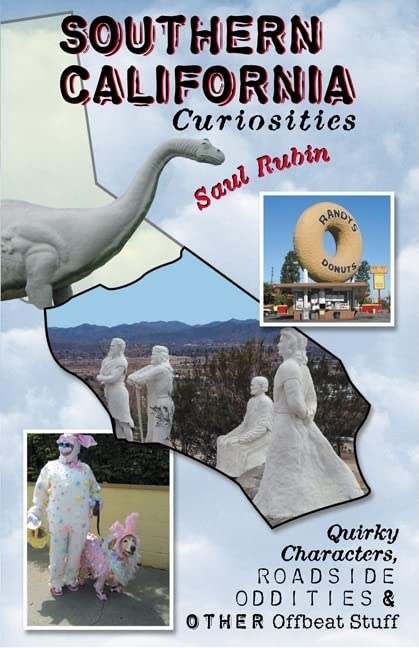
Welcome to Southern California, where residents take their pooches out for ice cream at the Hydrant Café, attend an annual Blessing of the Cars, and then climb aboard a hearse for a Grave Line Tour to find out how, when, where, and sometimes why Hollywood’s finest died. If you’re a sports fan, visit the Baseball Reliquary, home to a partially smoked cigar of Babe Ruth, a fragment of skin from the inner left thigh of baseball pioneer Abner Doubleday, and the gold-plated shovel used by Angels owner Gene Autry during groundbreaking ceremonies at Anaheim Stadium in 1964. And don’t forget the world’s largest champagne glass, still bubbling away at the Lawrence Welk Museum. With this book in hand, readers will be sure to laugh as they learn what lies way off the beaten path in this part of the Golden State.
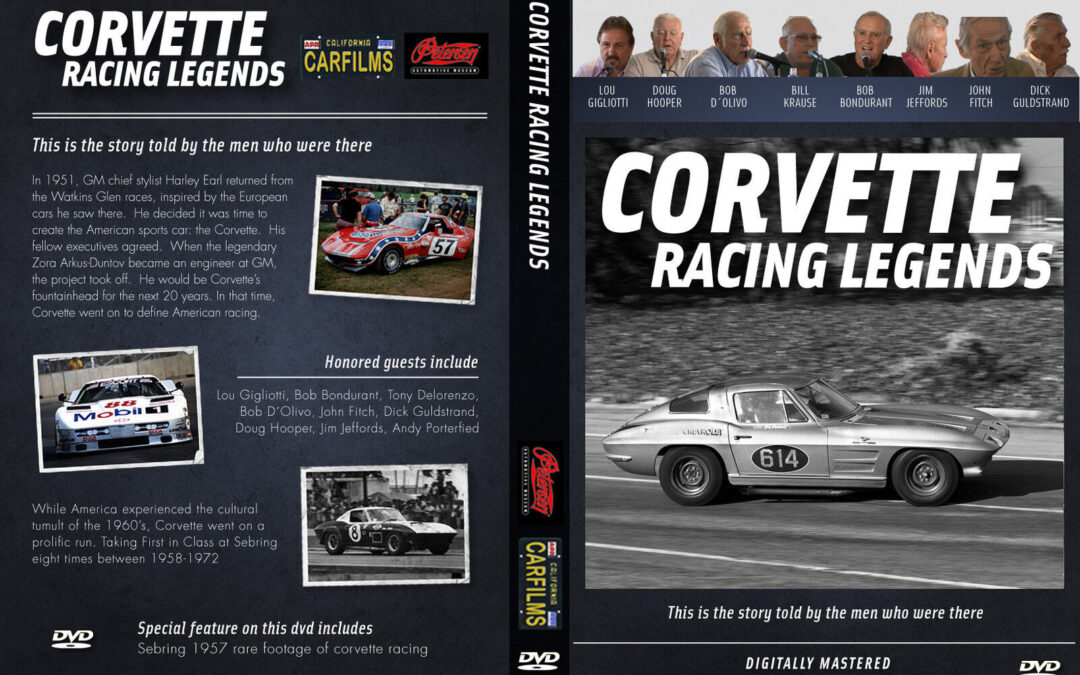
Hosted by Tim Considine at the Petersen museum
In 1951, GM chief stylist Harley Earl returned from the Watkins Glen races, inspired by the European cars he saw there. He decided it was time to create the American sports car: the Corvette. His fellow executives agreed. When the legendary Zora Arkus-Duntov became an engineer at GM, the project took off. He would be Corvette’s fountainhead for the next 20 years. In that time, Corvette went on to define American racing.
Just three years after the prototype was approved, driver John Fitch set a production-car record of 145 mph at Daytona Speed Week. That same month, Zora Arkus-Duntov set a record-breaking average of 150.583 mph at Daytona Beach. This was in 1956! But Earl and Duntov knew that a true American sports car required an ideal combination of world-blurring speed and unyielding stamina. Starting with a First in Class finish at the 1956 Grand Prix of Endurance in Sebring and an SCCA National Title at the Seattle Seafair, Corvette entered racing lore.
While America experienced the cultural tumult of the 1960’s, Corvette went on a prolific run. Taking First in Class at Sebring eight times between 1958-1972, they also won the same honors in ’62, ’66, ’68, ’70, and ’72 at the Prestigious Daytona Continental. Additionally, Corvette debuted at, and won, the 1962 Invitational Grand Prix in Riverside. The next year Corvette was the overall winner of the 1963 Watkins Glen International.
The Corvette engineered other impressive feats, such as reaching 183 mph on the GM Proving Grounds—in 1958! The 1963 Watkins Glen championship was won by a Grand Sport Corvette just one year after the model’s initial production. And in 1979, at Bonneville Speed Week, a 1968 Corvette set a GT record of 210.762 mph—making it the fastest carbureted car in the world.
Over the years, Corvettes have been piloted by a host of ace drivers. In 1959, Jim Jeffords and his “Purple People Eater MK III” shredded all comers and won the SCCA championship. And most notable of all has to be Roger Penske, who was the wheelman primarily responsible for the team’s ‘60s dynasty. But it was Briggs Cunningham who may have had the most important impact because, in 1960, he was the first driver to enter his Corvettes into the ultimate challenge of auto-racing: the 24 Hours of Le Mans.
Cunningham’s respectable 5th in the GT category and 8th overall laid the groundwork for Corvette’s future success– successes that include Dick Guldstrand’s then-record speed of 171.5 mph on the Mulsanne straight in 1967. Those triumphs continue to this day. Corvettes won the GT class at Le Mans in 2001, ’02, ’04, ’05 and ’06. Which brings Corvette’s story full-circle. Inspired by the powerful European marks as seen at an American race in the ‘50s, the team accepted the challenge of creating an American supercar to compete with those monsters, and a half-century later they have their golden child, which they win with—in the heart of Europe itself—on the world’s largest international stage.
Earl and Arkus-Dontov would be proud.

Hard cover out of print Soft Cover available here
Winner of the 2014 Dean Batchelor Award, Motor Press Guild “Book of the Year”
Short-listed for 2015 PEN / ESPN Literary Award for Sports Writing
Before noon on May 30th, 1964, the Indy 500 was stopped for the first time in history by an accident. Seven cars had crashed in a fiery wreck, killing two drivers, and threatening the very future of the 500.
Black Noon chronicles one of the darkest and most important days in auto-racing history. As rookie Dave MacDonald came out of the fourth turn and onto the front stretch at the end of the second lap, he found his rear-engine car lifted by the turbulence kicked up from two cars he was attempting to pass. With limited steering input, MacDonald lost control of his car and careened off the inside wall of the track, exploding into a huge fireball and sliding back into oncoming traffic.
Closing fast was affable fan favorite Eddie Sachs. “The Clown Prince of Racing” hit MacDonald’s sliding car broadside, setting off a second explosion that killed Sachs instantly. MacDonald, pulled from the wreckage, died two hours later.
After the track was cleared and the race restarted, it was legend A. J. Foyt who raced to a decisive, if hollow, victory. Torn between elation and horror, Foyt, along with others, championed stricter safety regulations, including mandatory pit stops, limiting the amount a fuel a car could carry, and minimum-weight standards.
In this tight, fast-paced narrative, Art Garner brings to life the bygone era when drivers lived hard, raced hard, and at times died hard. Drawing from interviews, Garner expertly reconstructs the fateful events and decisions leading up to the sport’s blackest day, and the incriminating aftermath that forever altered the sport.
Black Noon remembers the race that changed everything and the men that paved the way for the Golden Age of Indy car racing.